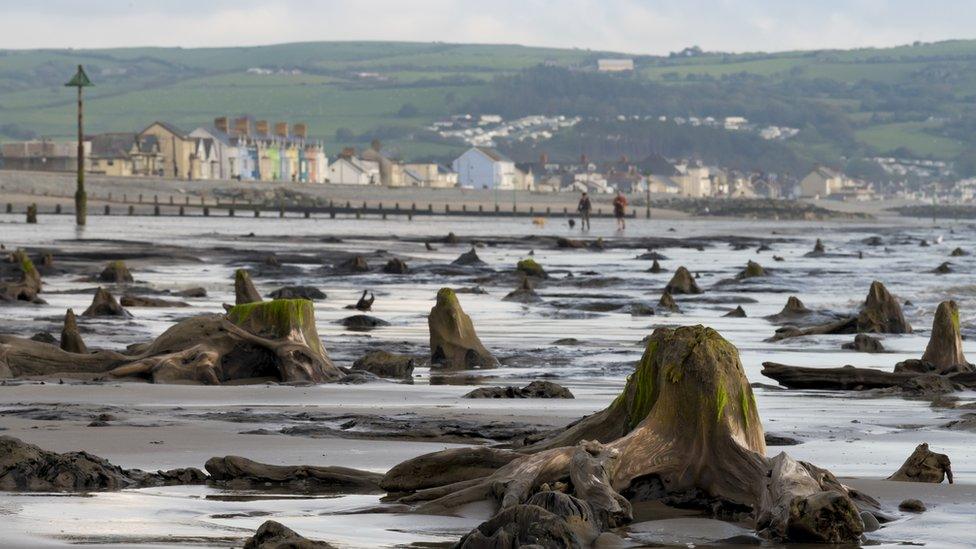Anglesey archaeology: Bronze Age cairn dig at Bryn Celli Ddu
- Published
Bryn Celli Ddu burial chamber: Dig suggests site was a "special location" for centuries
An excavation is under way on the site of a suspected 4,500-year-old burial cairn that lies next to one of Wales' most important prehistoric monuments.
Experts are hoping to learn more about it and its relationship to Bryn Celli Ddu burial chamber, external at Anglesey.
The 5,000-year-old "passage tomb" is aligned to coincide with the rising sun on the summer solstice.
Dr Ffion Reynolds said the cairn showed the site remained a "special location" centuries after the chamber was built.
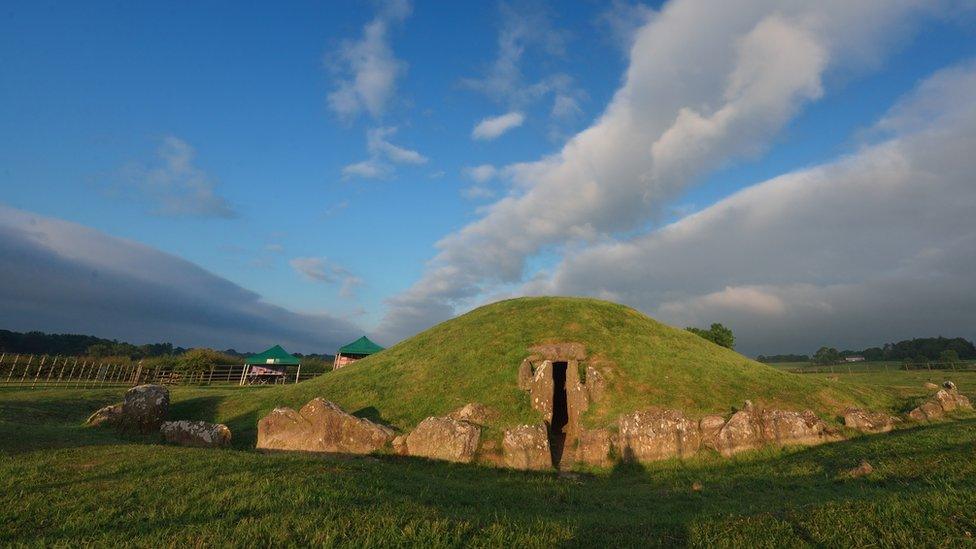
Bryn Celli Ddu burial chamber is aligned to the sun and is lit during the summer solstice
In fact, the Bronze Age cairn is believed to be larger than its more famous neighbour.
Bryn Celli Ddu, which translates to The Mound in the Dark Grove, was first excavated in 1865 and reconstructed in the 1920s.
But more recent excavations have shown human activity around the site throughout history.
"It suggests that Bronze Age people are coming back to the same location as their Neolithic ancestors and adding their own mark to the landscape," said Dr Reynolds.
Excavations have shown the burial chamber was built as a "henge" - a ritual enclosure like Stonehenge - consisting of a bank around an inner ditch, enclosed in a circle of upright stones. The passage tomb was added later.
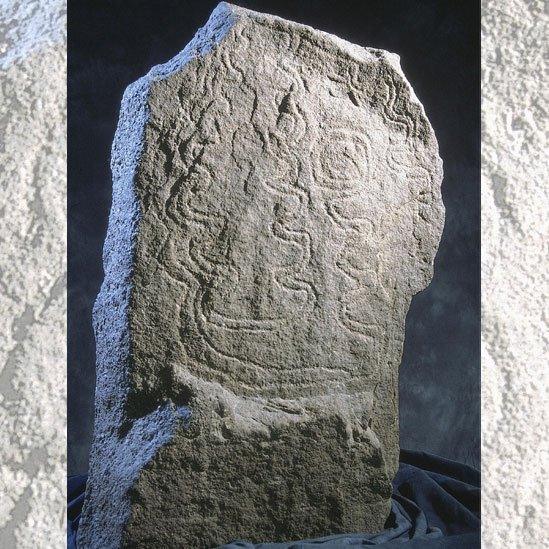
This standing stone was found at the back of the burial chamber
Human bones were found in the passage with other finds including two flint arrowheads, a stone bead, and limpet and mussel shells.
One of the most striking discoveries was a giant decorated pattern stone, external found near a ceremonial pit at the rear of the chamber.
The site as a whole appeared to be "dedicated to the ancestors", according to Dr Reynolds from Cadw, Welsh Government's historic environment service.
An archaeological open day, external is being held next weekend with Dr Reynolds working on site until early July with Ben Edwards from Manchester Metropolitan University and Dr Seren Griffiths from the University of Central Lancashire.
- Published10 June 2019
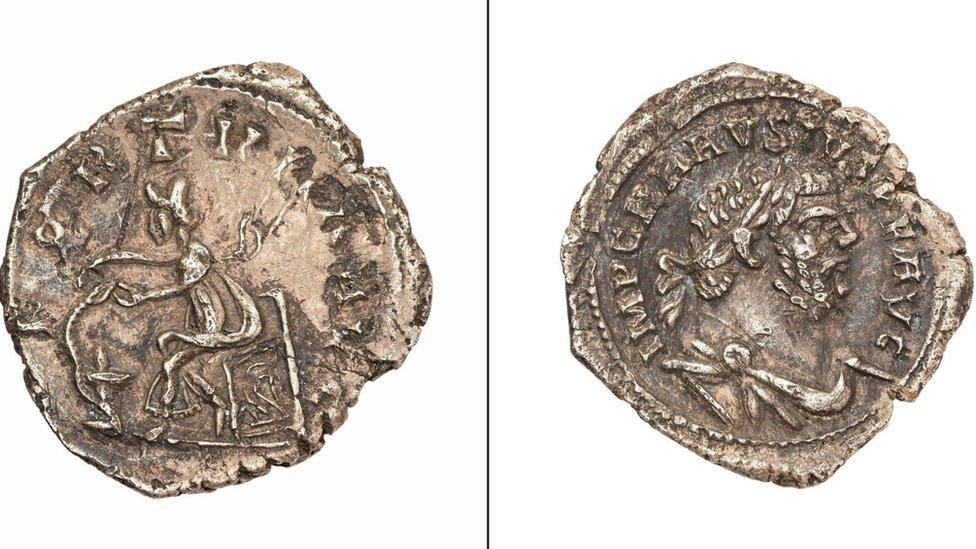
- Published10 June 2019
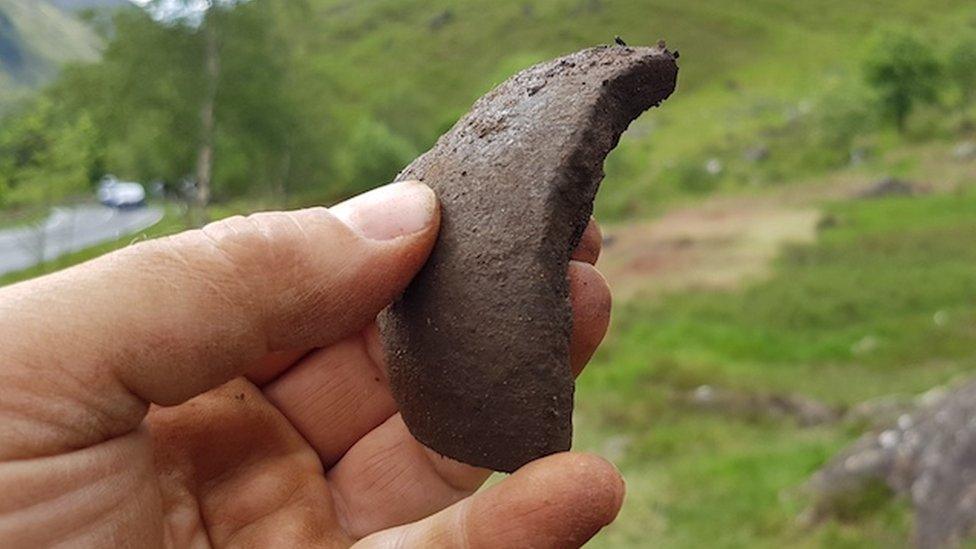
- Published25 May 2019
